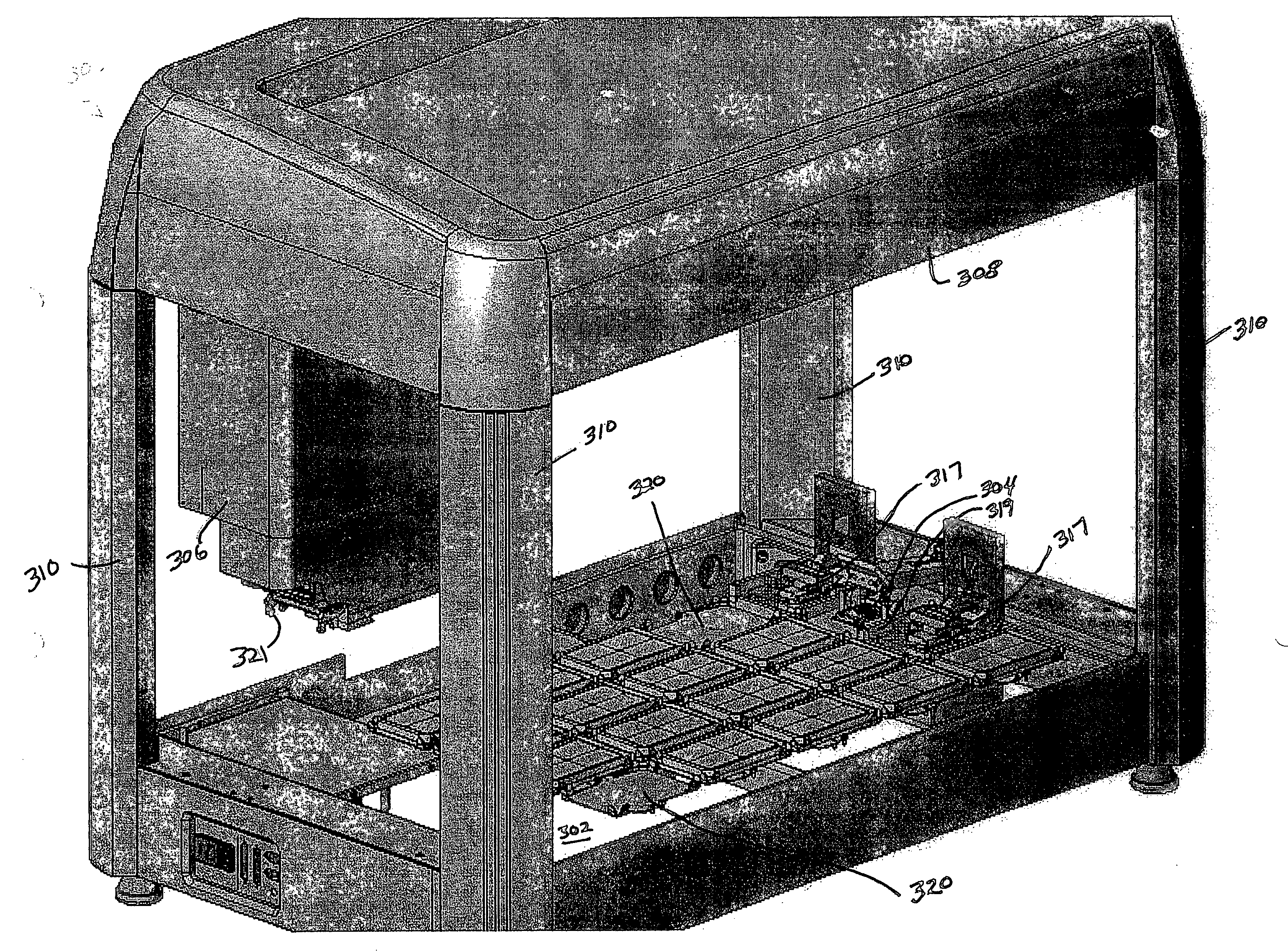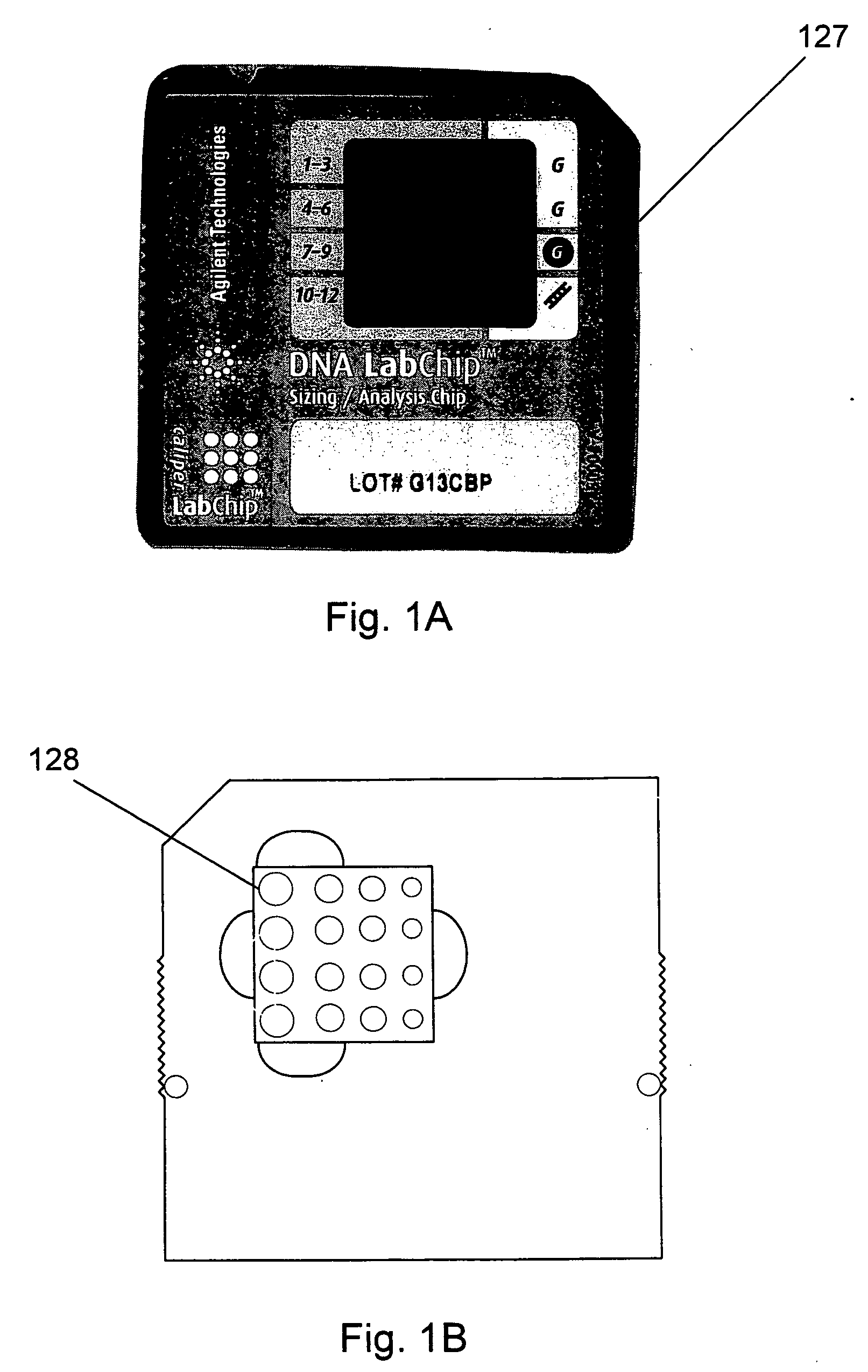Automated system for handling microfluidic devices
a microfluidic chip and automatic system technology, applied in the direction of analytical using chemical indicators, laboratory glassware, instruments, etc., can solve the problems of affecting the life span of the chip when shipped and stored, the type of shipping container is undesirable, and the interaction between the dye and the surface chemistry
- Summary
- Abstract
- Description
- Claims
- Application Information
AI Technical Summary
Benefits of technology
Problems solved by technology
Method used
Image
Examples
Embodiment Construction
[0035] The present invention is directed towards an automated apparatus for processing a microfluidic chip. An example of a microfluidic chip 204 is illustrated in FIG. 2. The chip 204 shown is the working part of the chip without a mount. In the embodiment shown in FIG. 2, the chip 204 includes a bottom plate 212 formed from a solid substrate that is substantially planar in structure, and which has at least one substantially flat upper surface 216. The substrate could be fabricated from a variety of materials such as fused silica, glass, or plastic. In this embodiment, the channels and / or chambers of the microfluidic chip 204 are formed when grooves 213 in the upper surface 216 of the bottom plate 212, are enclosed when the bottom plate 212 is bonded to a top plate 214. The grooves can be formed in the upper surface 216 of the bottom plate by any fabrication method capable of producing microscale features in the material forming the bottom plate. For example, if the bottom plate 21...
PUM
| Property | Measurement | Unit |
|---|---|---|
| diameters | aaaaa | aaaaa |
| volumes | aaaaa | aaaaa |
| liquid | aaaaa | aaaaa |
Abstract
Description
Claims
Application Information
 Login to View More
Login to View More - R&D
- Intellectual Property
- Life Sciences
- Materials
- Tech Scout
- Unparalleled Data Quality
- Higher Quality Content
- 60% Fewer Hallucinations
Browse by: Latest US Patents, China's latest patents, Technical Efficacy Thesaurus, Application Domain, Technology Topic, Popular Technical Reports.
© 2025 PatSnap. All rights reserved.Legal|Privacy policy|Modern Slavery Act Transparency Statement|Sitemap|About US| Contact US: help@patsnap.com



